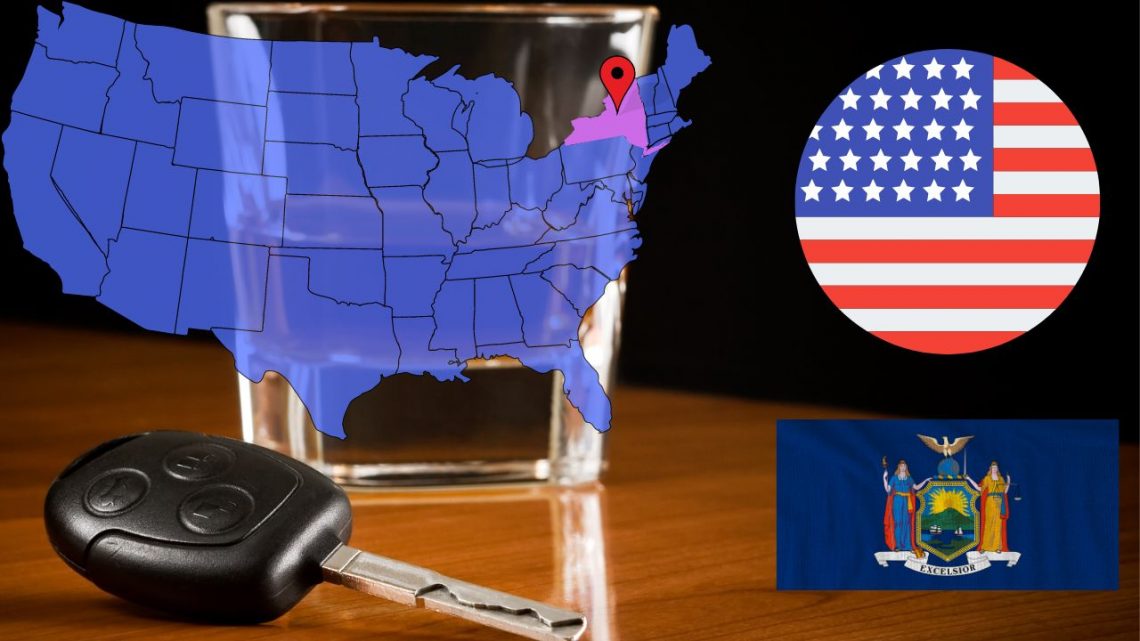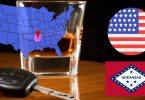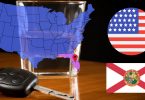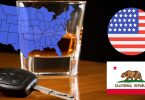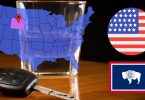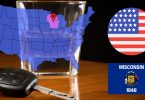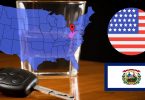In New York, driving with a blood alcohol content (BAC) of 0.08% (80 ml of alcohol per 100 ml of blood) or above is legally deemed as impaired driving, constituting a criminal offense.
Drink and Drive Penalties and Punishments in New York
Driving under the influence of alcohol or drugs is a serious crime in New York State, reflecting the potential for impaired judgment, coordination, and driving ability. The extent of impairment is influenced by various factors, including the amount of alcohol consumed, food intake before or while drinking, the duration of alcohol consumption, body weight, and gender. It’s crucial to recognize that there’s no quick way to sober up, with the average body processing alcohol at a rate of about one drink per hour.
Types of Alcohol and Drug-Related Violations in New York State:
- Driving While Intoxicated (DWI): Involves operating a vehicle with a .08 Blood Alcohol Content (BAC) or higher, or showing other evidence of intoxication. For commercial drivers, the threshold is .04 BAC.
- Aggravated Driving While Intoxicated (Aggravated DWI): This is when a driver has a .18 BAC or higher.
- Driving While Ability Impaired by Alcohol (DWAI/Alcohol): This is for BAC levels more than .05 but less than .07, or showing other evidence of impairment.
- Driving While Ability Impaired by a Single Drug other than Alcohol (DWAI/Drug)
- Driving While Ability Impaired by a Combined Influence of Drugs or Alcohol (DWAI/Combination)
- Chemical Test Refusal: Refusing to undergo a chemical test (breath, blood, or urine).
- Zero Tolerance Law: Applies to drivers under 21 years old driving with a .02 to .07 BAC.
Penalties for Alcohol or Drug-Related Violations:
The penalties for these violations can include fines, jail time, and the loss of driving privileges, as outlined below:
- Aggravated DWI: $1,000 – $2,500 fine, up to 1 year in jail, license revoked for at least one year.
- DWI or DWAI-Drug: $500 – $1,000 fine, up to 1 year in jail, license revoked for at least six months.
- DWAI by Alcohol: $300 – $500 fine, up to 15 days in jail, license suspended for 90 days.
(And so on for each specific violation, including multiple offenses and refusals to take chemical tests, each with its own set of fines, potential jail time, and mandatory license actions.)
Additional Penalties:
- Increased penalties for multiple violations within 25 years.
- Surcharges for misdemeanors and felonies.
- Potential permanent revocation for three or more convictions or refusals within 10 years, with a waiver request possible after 5 years.
Given the complexity and severity of these penalties, it’s imperative for drivers in New York to be fully aware of the laws and their implications. For the most current information and updates on drink and drive penalties and punishments, regularly check the official state website. This ensures that you are informed about the legal expectations and consequences related to impaired driving in New York.
Calculating Your Legal Alcohol Blood Limit in New York
In New York, the legal blood alcohol concentration (BAC) limits are strictly enforced to prevent impaired driving. Law enforcement officers commonly use breathalyzer tests at traffic stops to determine a driver’s BAC level. These devices are designed to measure the alcohol content in one’s breath, providing an immediate estimate of their blood alcohol level. Given the critical nature of such assessments, it’s essential for drivers to understand their own BAC levels and the impact of alcohol consumption on their ability to drive safely.
How to Check Your BAC Level:
- Use a High-Quality Alcohol Breathalyzer: As an experienced phlebologist with over a decade of practice, I recommend using a professional-grade alcohol breathalyzer to estimate your BAC. One of the most reliable devices available in New York is the BACtrack S80. It offers professional-grade accuracy and is DOT & NHTSA approved as well as FDA 510(k) cleared. Having such a device in your vehicle can be invaluable, especially since many individuals may not accurately judge their level of impairment. The BACtrack S80 can provide a quick and reasonably accurate assessment of your BAC, helping you make informed decisions about your ability to drive.
- My BAC Calculator: Alongside other phlebologists and with the assistance of web developers, I’ve developed a BAC calculator that’s accessible online. This tool considers various factors, such as your weight, gender, the amount and type of alcohol consumed, and the time frame over which you’ve been drinking, to estimate your BAC level. While no online calculator can provide a 100% accurate reading, our tool is designed to offer a close estimate that can help guide your decisions regarding driving after consuming alcohol.
Important Consideration:
While both the BACtrack S80 breathalyzer and our online BAC calculator can provide valuable estimates of your blood alcohol level, it’s crucial to remember that these methods are not foolproof and should not be solely relied upon to determine your legality to drive. Factors such as calibration of the device, individual metabolism rates, and the accuracy of the information entered into the calculator can affect the results. Therefore, if there’s any doubt about your sobriety or if your estimated BAC is close to or above the legal limit of 0.08%, the safest course of action is to not drive.
Using these tools can significantly reduce the risk of impaired driving by providing you with a better understanding of how alcohol affects your BAC level. However, the best strategy to avoid driving under the influence is to plan ahead if you intend to drink, such as arranging for a designated driver or using public transportation or ride-sharing services. Remember, safety should always be your top priority.
Ways to Avoid Driving with a High BAC in New York

Driving with a high blood alcohol concentration (BAC) poses significant risks, not only to the driver but also to others on the road. In New York, there are several practical and convenient alternatives to driving under the influence that can help ensure everyone’s safety. Here are some recommended strategies:
1. Utilize Ride-Sharing Apps and Local Taxi Services:
- Ride-Sharing Apps: Apps like Uber and Lyft offer a reliable and readily available means to get you home safely without having to get behind the wheel. These services operate 24/7 in many areas, providing a flexible option for any situation.
- Local Taxi Companies: For those who prefer traditional taxi services, New York City boasts reputable companies such as NYC Car Service By Dial 7, which has been serving the community since 1977. In the Hempstead area, Taxi Independiente offers another trusted option. These local services ensure that no matter where you are in New York, a safe ride home is just a phone call away.
2. Order a Designated Driver Service:
- If you’ve driven to a location but then realize you’ve consumed too much alcohol to drive back safely, consider using a designated driver service. This option allows you to get both yourself and your car back home without taking unnecessary risks.
- In New York City: NYC Drivers offers professional designated driver services to meet your needs.
- In Hempstead Town: Hall Car Services provides similar solutions for those outside the city.
- Simply searching for “designated driver service” along with your city’s name online can help you find local options that cater to your specific area.
By opting for these alternatives, you not only safeguard your well-being but also contribute to the safety of everyone on the road. Whether you’re planning a night out or find yourself in a situation where you’ve consumed alcohol unexpectedly, remember that there are always safer options available than driving under the influence. Planning ahead and keeping these resources in mind can make all the difference in avoiding the severe consequences associated with high BAC driving in New York.

Sticking to DWI Laws in New York: Sad Statistics
Alcohol plays a role in over 30% of vehicular accidents in New York State, with DWI-related traffic fatalities in New York City surging by 60% in 2021 to 43, compared to the previous three-year average. To combat this, New York emphasizes the importance of checking your blood alcohol level before driving, recommending the use of breathalyzers to stay within legal limits.
To avoid the risks of drunk driving, it’s advised to opt for taxis, ride-sharing services like Uber, or designated driver services. For current DWI laws and regulations, refer to New York’s official website.
Misconceptions about alcohol’s impact on driving abound, yet the dangers of DUI are clear: it compromises your and others’ safety. Relying on subjective assessments of your drinking and driving capability is risky. If in doubt, choose public transportation over driving. Regularly consulting New York’s Department of Vehicles website ensures you’re informed about the latest in DWI legislation.

